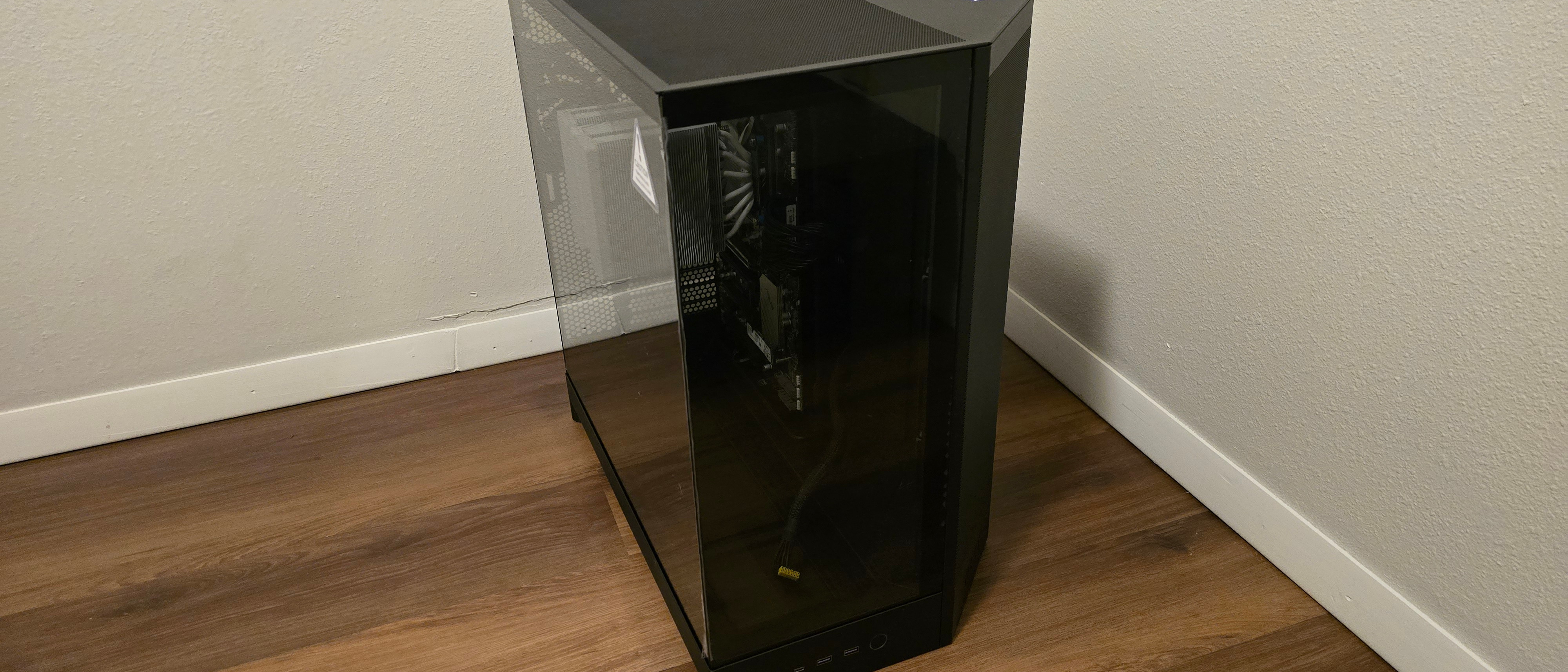Why you can trust Tom's Hardware
Maximum Noise Levels
The noise levels of NZXT’s H9 Flow were about average for cases we’ve tested recently, if you go by dBA measurements alone. The pitch of the fans had a softer impact than the noise measurement would indicate, slightly oscillating while at full speed.
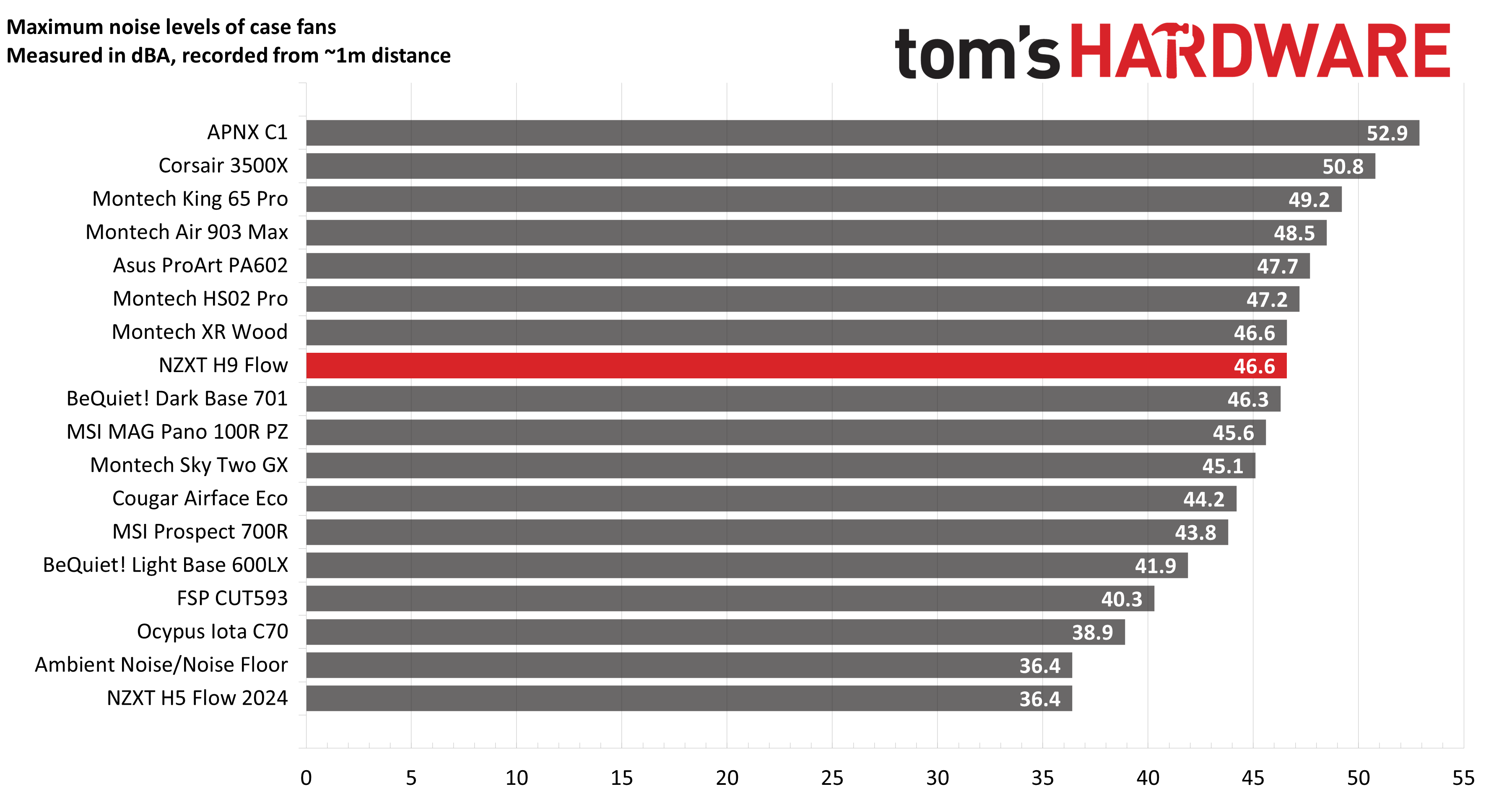
Maximum thermal performance – pre-installed fans noise-normalized to 38.9 dBA
This set of tests is designed to appeal to those who love quietly running PCs, with both system fans and the CPU fan noise normalized to 38.9 dBA. Consider this a measure of the case’s thermal efficiency when noise levels are set to run quietly. This first set of benchmarks examines CPU performance.
At first glance, these results are on the lower end of average.
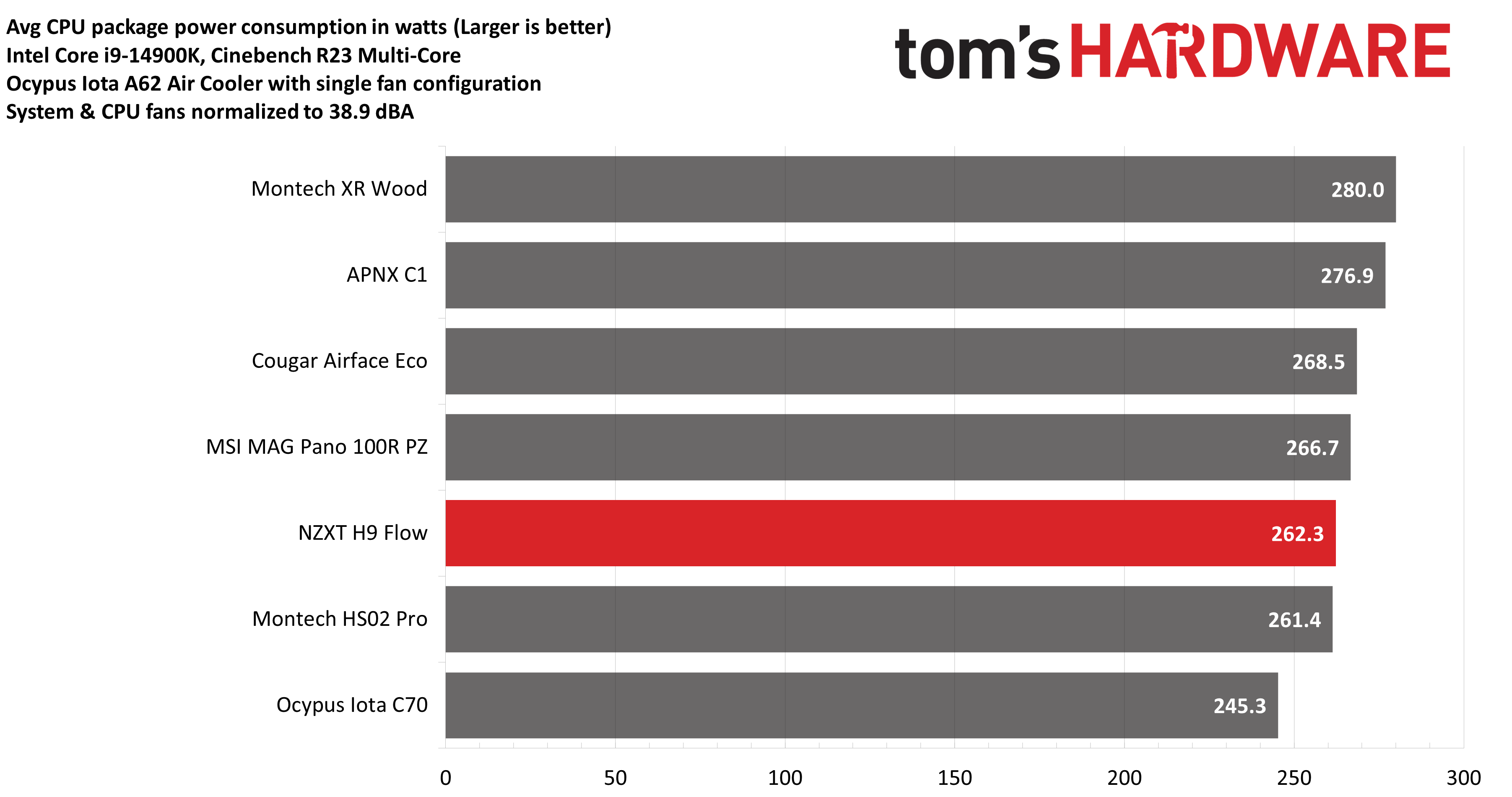
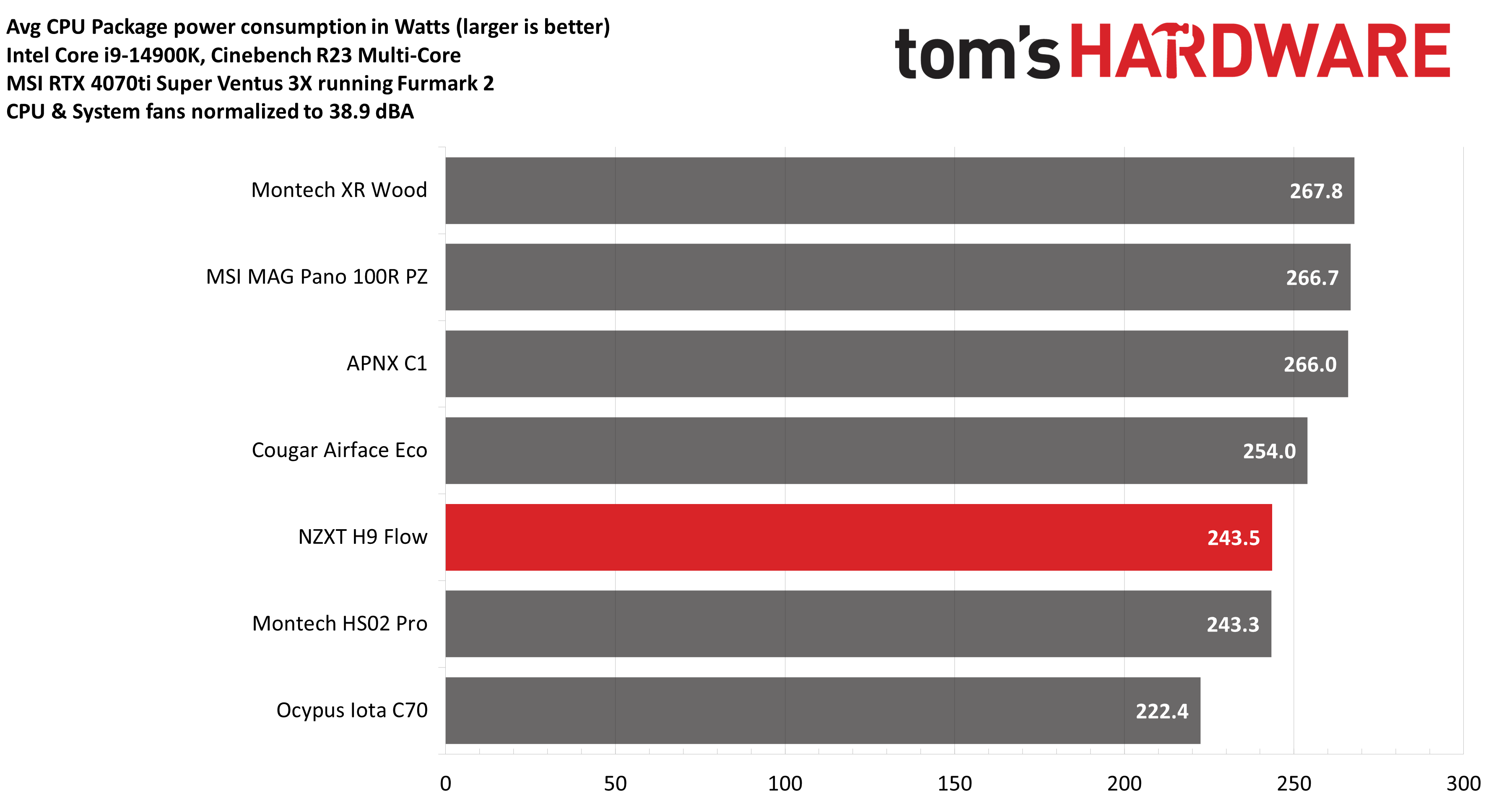
Moving on to GPU benchmarks with the system and CPU cooler fans normalized to 38.9 dBA, performance is a little better. One thing to keep in mind is that while testing this case, I felt that the use of a RTX 4070 Ti, which “only” uses 300W might be an issue. A hotter, more power-hungry GPU might show better results due the airflow design of NZXT’s H9 Flow.
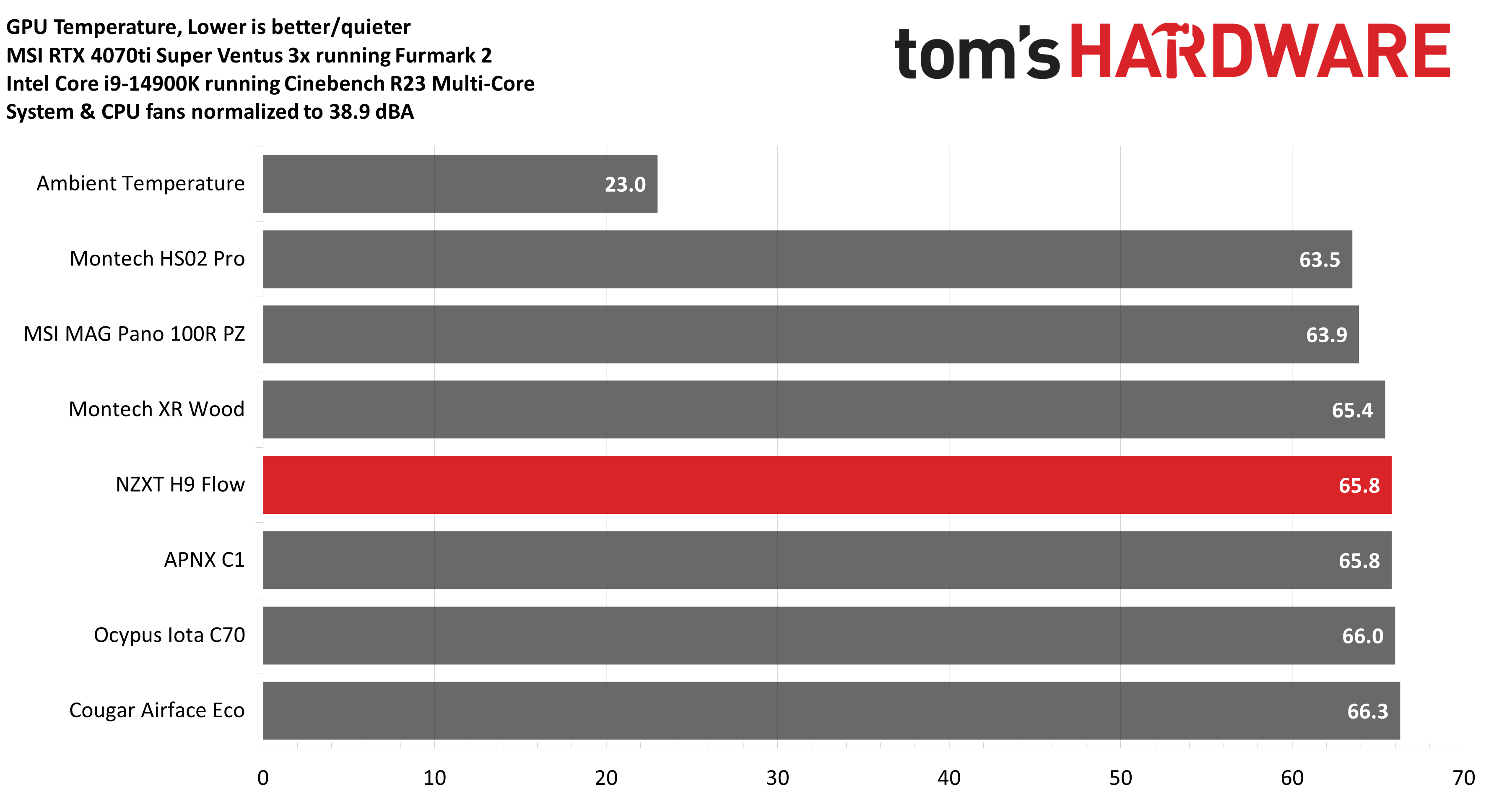
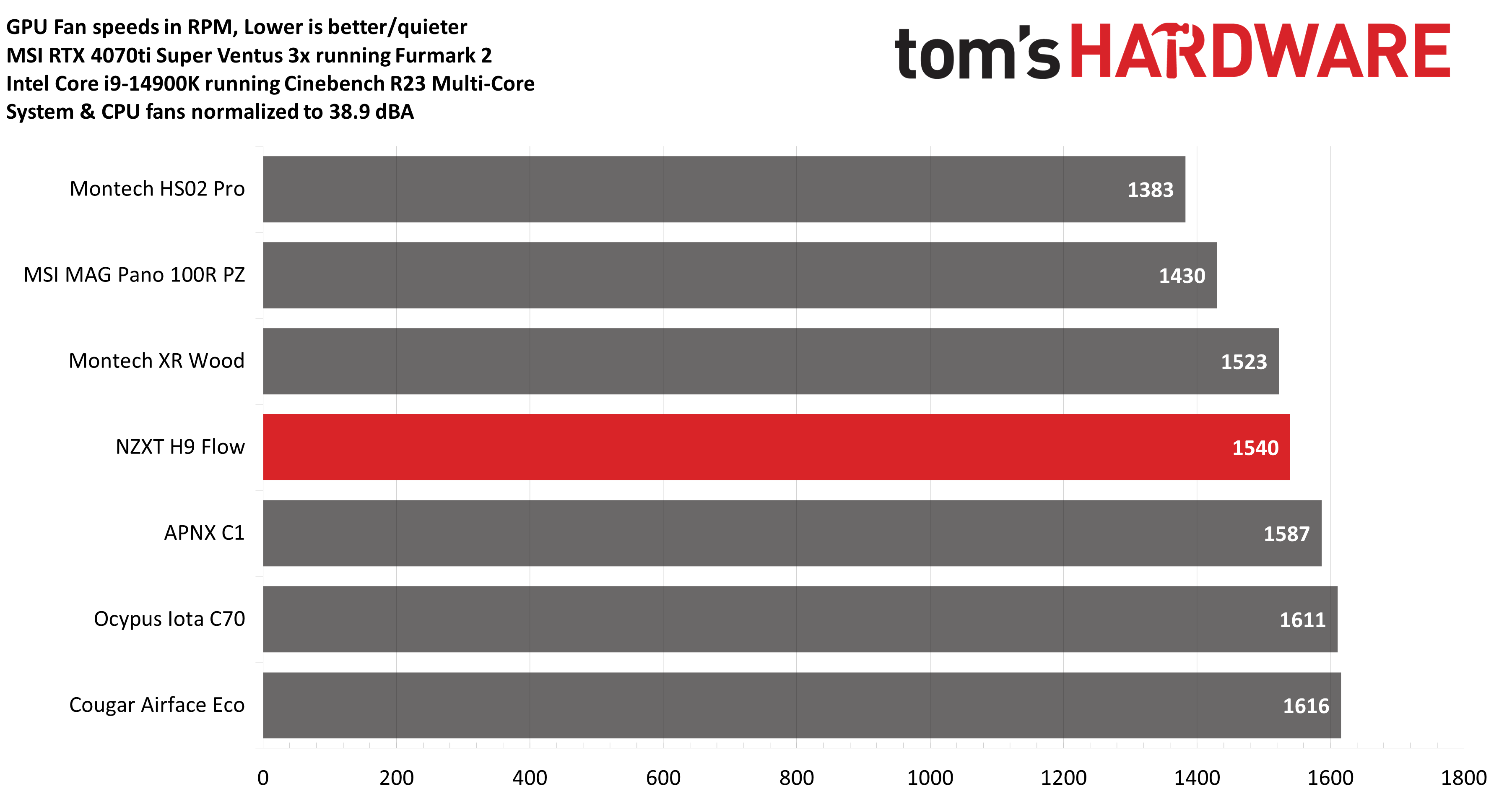
Maximum thermal performance – pre-installed fans at full speed
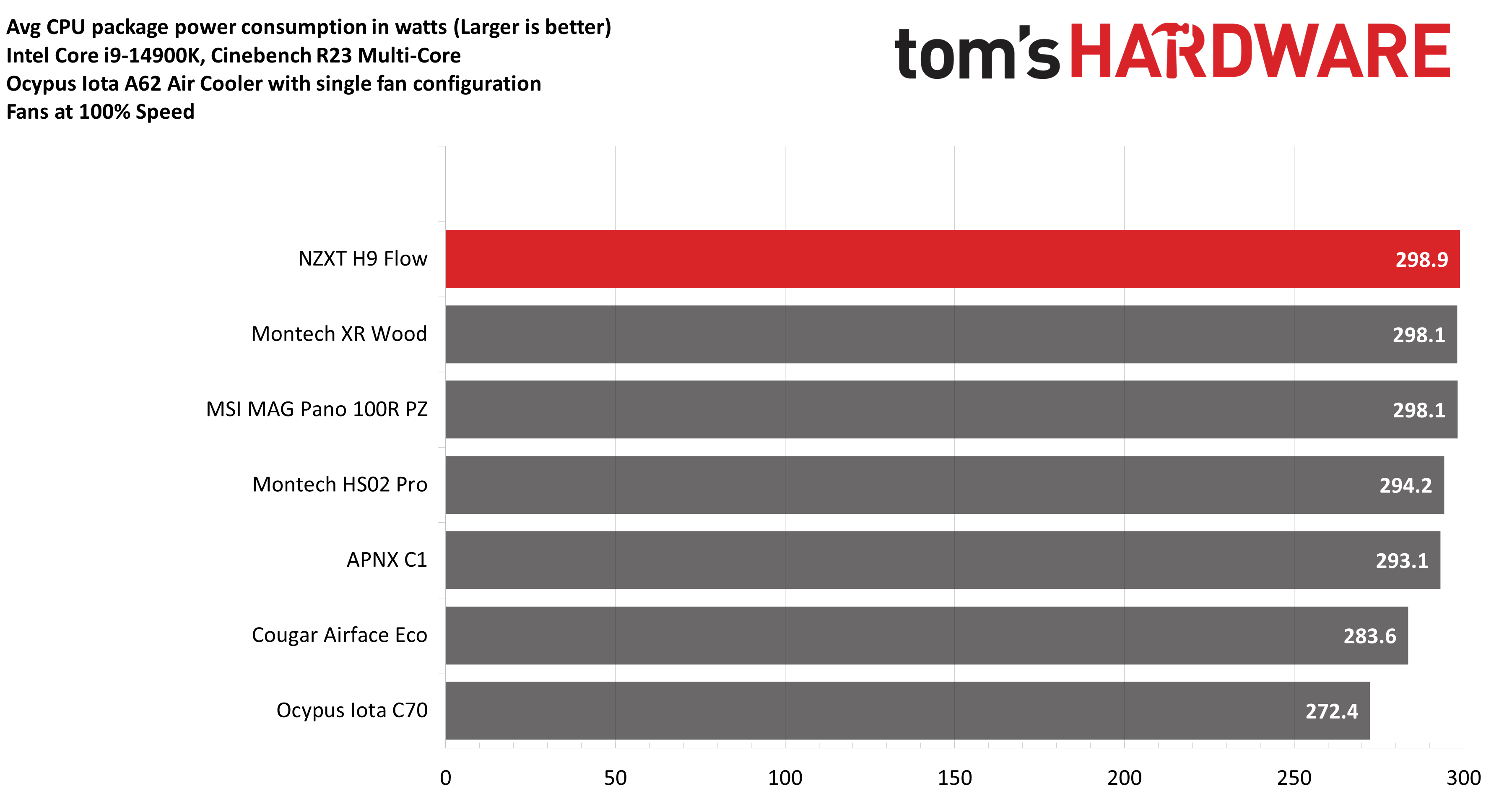
One of the reasons I mentioned earlier that my use of a 300W GPU might not show this case in the best light is that the CPU-only thermal benchmarks are absolutely phenomenal when the system’s pre-installed fans are used, eclipsing our best previously recorded results!
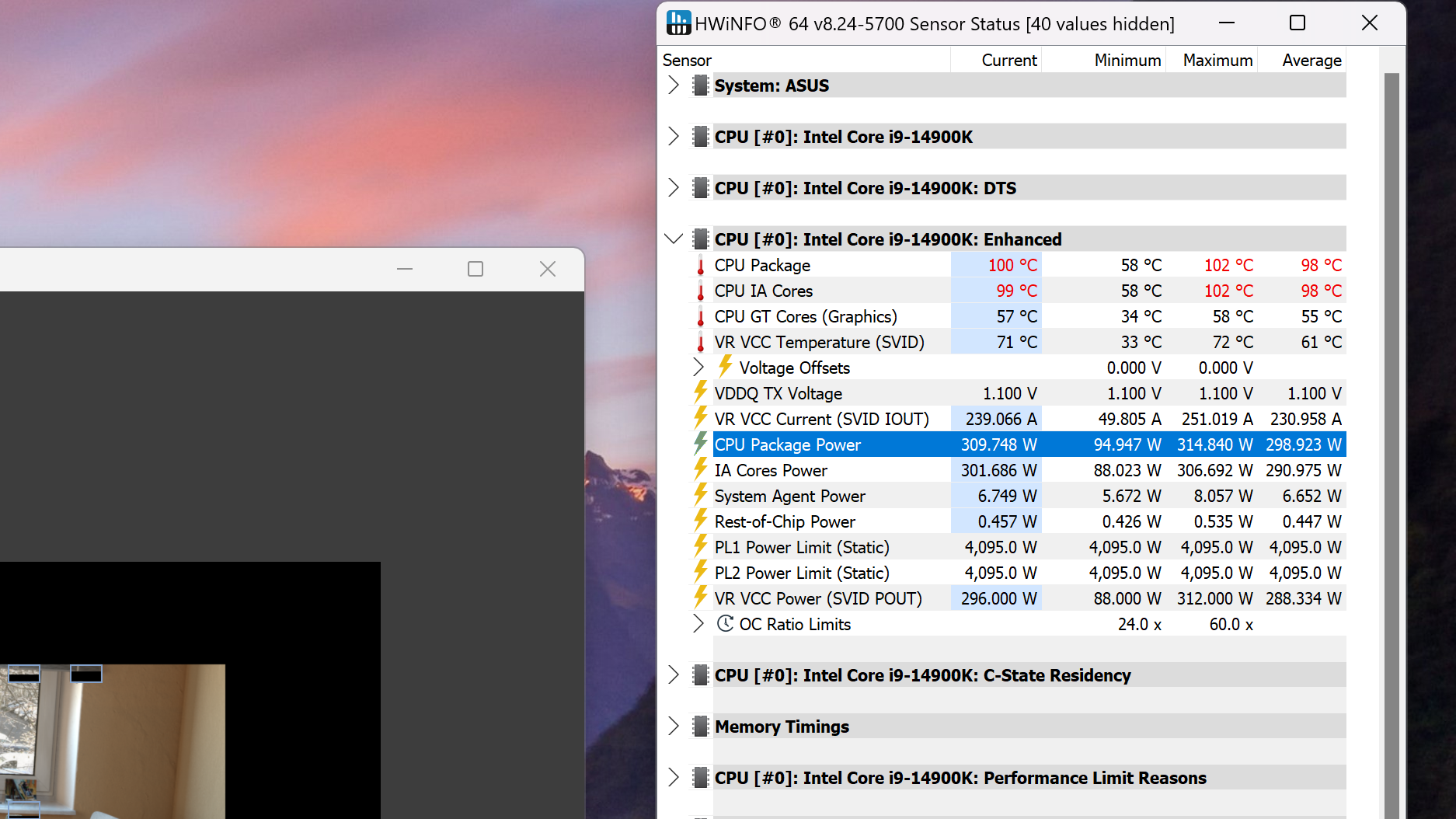
Adding 300W of GPU heat to the mix brings down results to third place overall, which isn’t quite as good, but still impressive. I have to wonder how much more effective this case would be utilizing the additional fan slots at the top and bottom of the case.
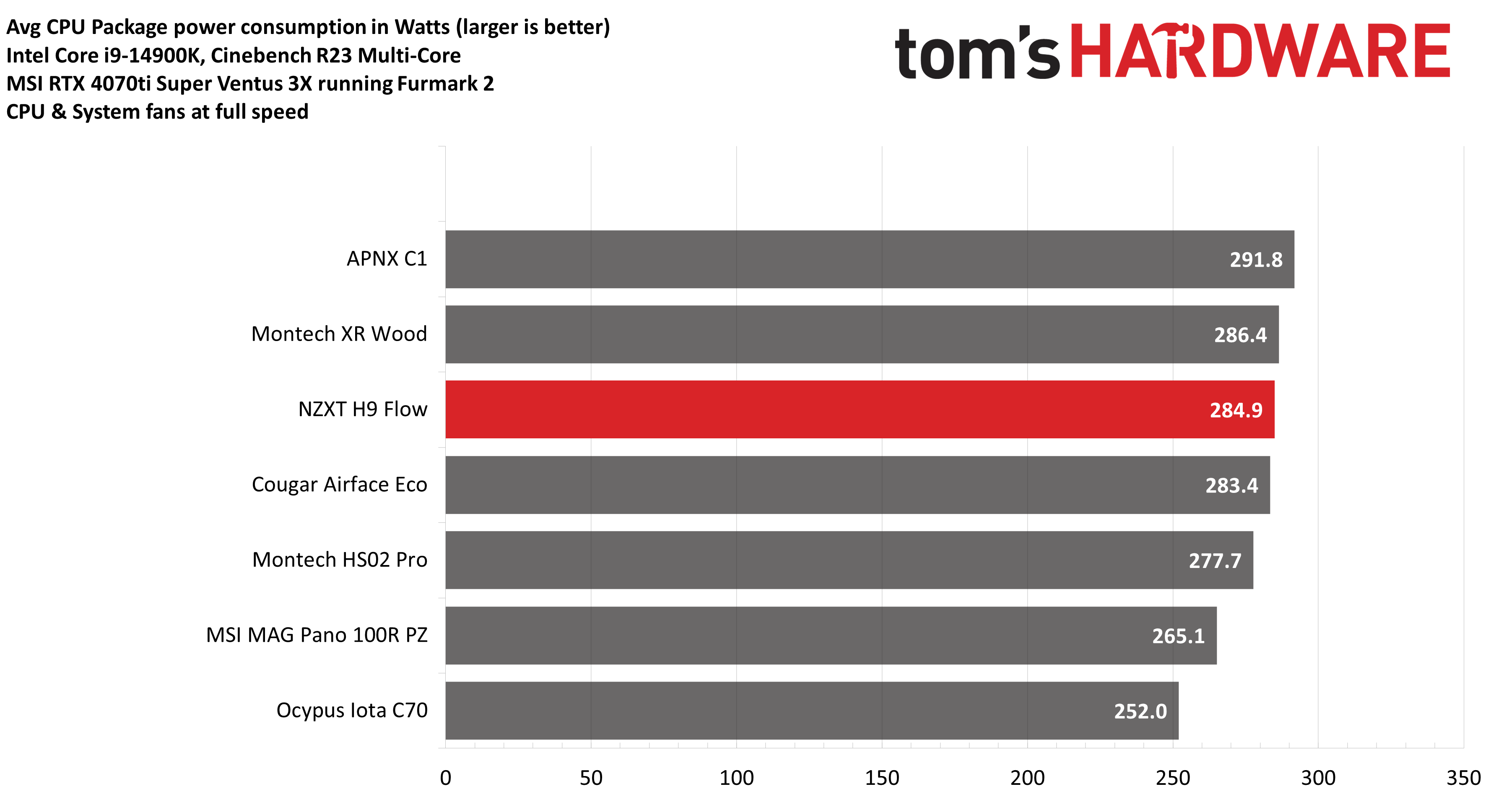
GPU temperatures are amongst the best compared to the competitors I’ve tested when stressing both the GPU and CPU with the system fans run at full speed, averaging only 64.1 degrees Celsius on the graphics card.
Get Tom's Hardware's best news and in-depth reviews, straight to your inbox.
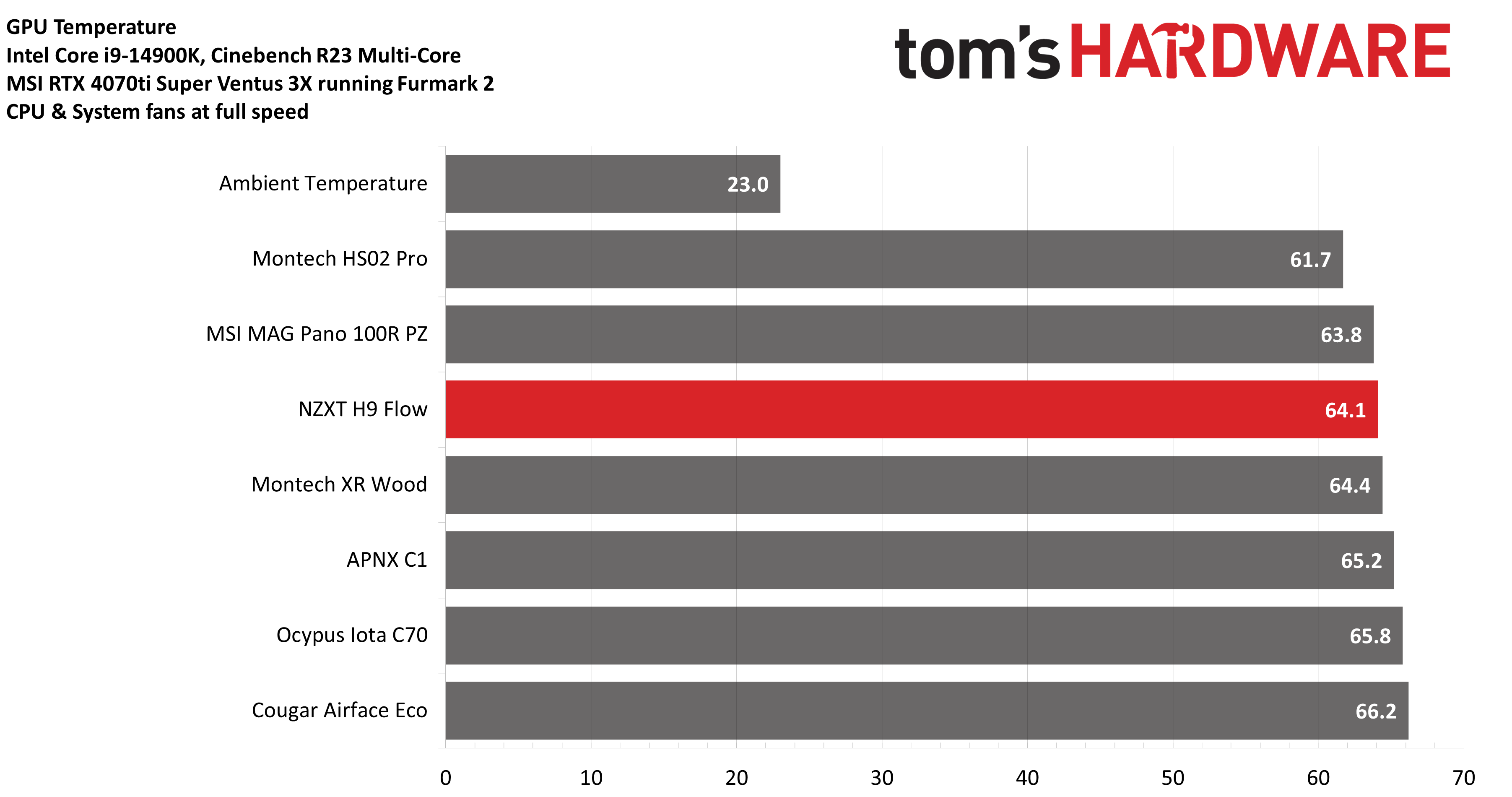

Conclusion
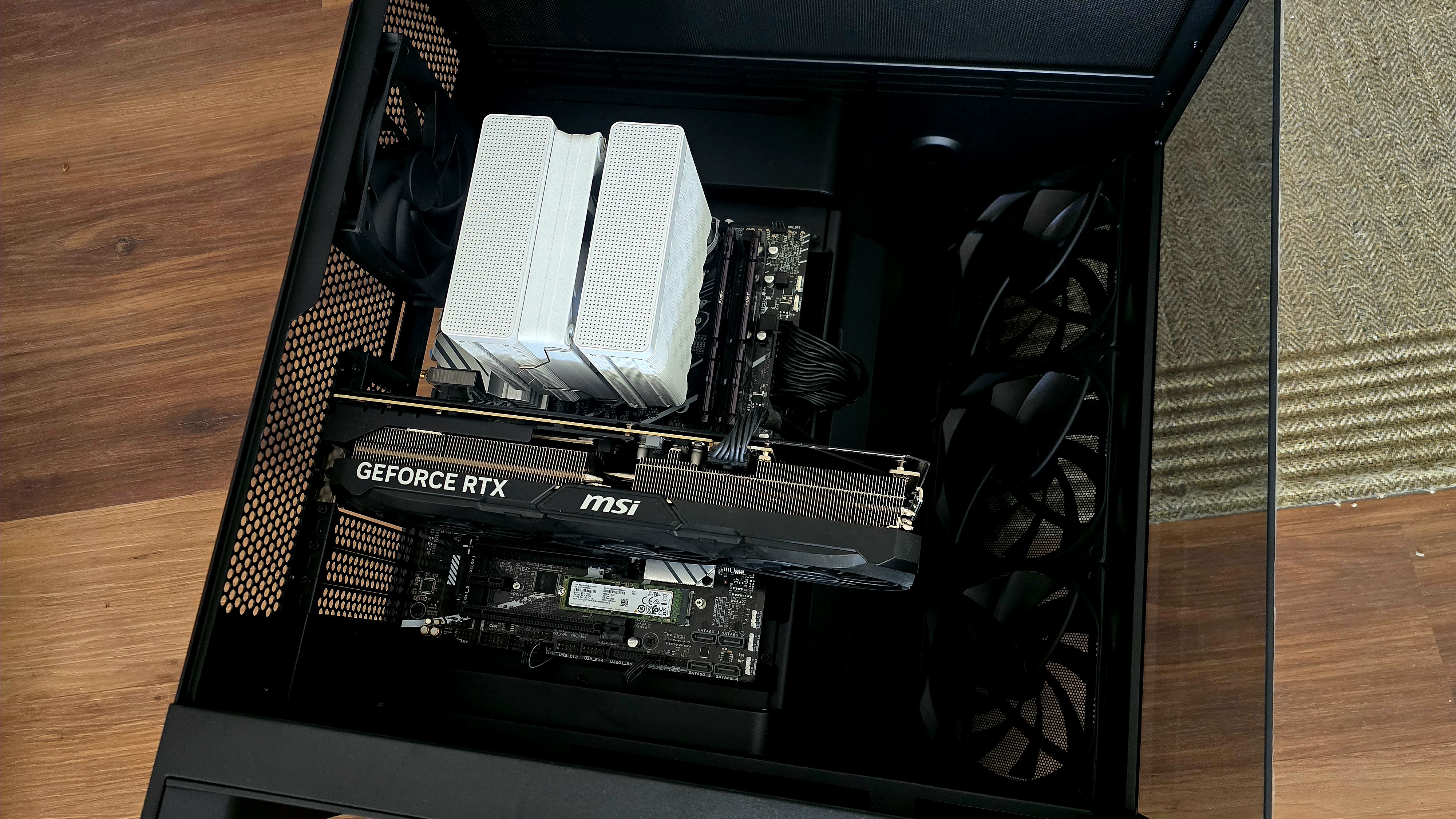
NZXT’s H9 Flow has a sleek design, without RGB bling. It is spacious, with lots of room to work with on both sides of the case – whether in the front supporting the largest GPUs on the market, or in the back with extra space for cable storage.
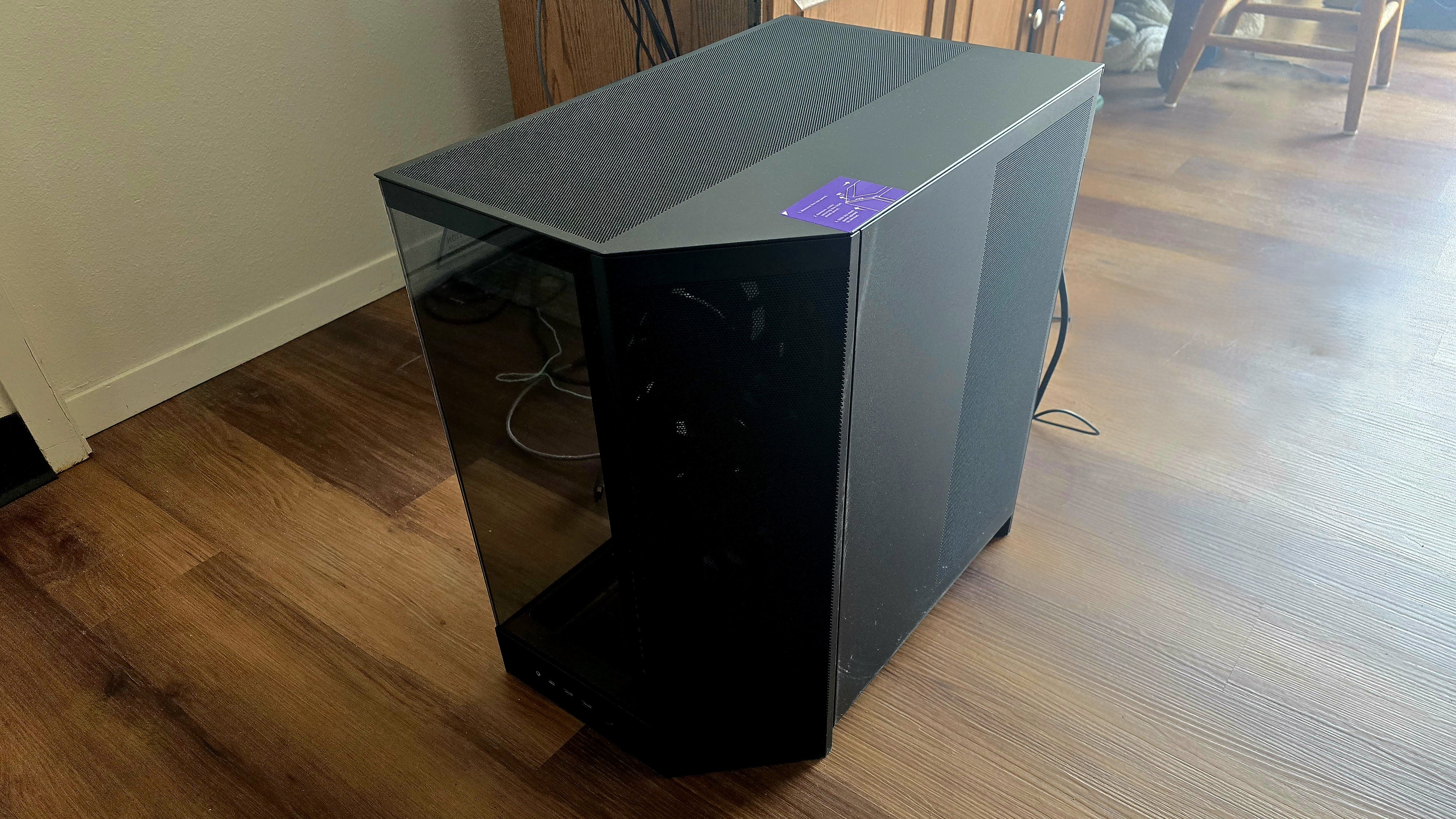
Liquid cooling enthusiasts will be pleased to know the H9 Flow supports up to two 420mm radiators for the best possible temperatures, and storage fans will appreciate the support for up to six SATA drives – the most we’ve seen on a mainstream case in quite a while. If you’re interested in this flagship NZXT case, it is available on Amazon for a decidedly non-flagship price of just $169.99.

Albert Thomas is a contributor for Tom’s Hardware, primarily covering CPU cooling reviews.
-
dwd999 Note to manufacturer's Public Relations and Promotions people: when providing cases for review please provide white cases so we can see in the pictures what's going on. But its okay because the pictures on your website are excellent. And besides, back connect capability is the only thing that matters any more.Reply
Note to Reviewers: when reviewing cases please use all white components so we can see what's going on. And back connect motherboards since they are the only ones that matter any more. -
Heat_Fan89 I bought the NZXT H7 Flow 2024 case and I am extremely happy with it. Two styles I really don't care for, the new "fish tank cases" like the H9 Flow and DIY builds with excessive RGB lighting.Reply -
Albert.Thomas Reply
I'll keep that in mind.dwd999 said:Note to Reviewers: when reviewing cases please use all white components so we can see what's going on.
Strong disagree.dwd999 said:And back connect motherboards since they are the only ones that matter any more. -
MergleBergle Reply
LOL, with you on the strong disagree on the back connect motherboard issue. I think it's a fantastic evolution, but case and motherboard manufacturers aren't all in on it and only producing things that could be supported. It's a new idea, relatively speaking, that hasn't grown to the point of being everywhere.Albert.Thomas said:I'll keep that in mind.
Strong disagree.
